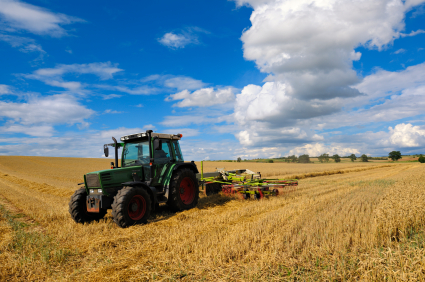 It looks like crop insurance special interests are trying to scuttle one of the only provisions in the Bipartisan Budget Agreement of 2015 that is likely to actually save money.
It looks like crop insurance special interests are trying to scuttle one of the only provisions in the Bipartisan Budget Agreement of 2015 that is likely to actually save money.
Section 201 of the bill requires the USDA to find savings in the highly subsidized federal crop insurance program by renegotiating the program’s Standard Reinsurance Agreement (SRA) before the end of 2016. The SRA is a contract between the federal government and crop insurance companies detailing the subsidies companies receive for selling and processing policies (currently around $1.4 billion per year) and divides any potential profits from policies that don’t make a claim (known as underwriting gains). The bill requires the SRA renegotiation to reduce the targeted annual profit from underwriting gains from 14 percent to 8.9 percent.
The Congressional Budget Office (CBO) scores this provision as saving $3 billion over 10 years. There is precedent for thinking this savings will actually be realized. The last time the SRA was renegotiated in 2010, taxpayers saved $6 billion by reducing the paper-shuffling subsidies and requiring companies to shoulder a slightly higher amount of risk of loss.
This would be a good turnaround for a sector that promises savings but never produces them.
The 2014 farm bill promised $16.6 billion in savings over ten years, but this fantasy is crashing down less than two years after the bill was signed into law. The reality is the 2014 farm bill increased spending much more than promised. Spending in FY14 was $5.2 billion more than projected by the farm bill because of payments made to farmers.
|
($ in millions)
|
Farm Bill Baseline Estimate in FY14
|
Actual FY14 Spending
|
Cost Overrun Due to 2014 Farm Bill and Market Conditions
|
|
Subsidized Crop Insurance
|
$6,382
|
$8,244
|
$1,862
|
|
Supplemental Disaster Aid
|
$0
|
$3,041
|
$3,041
|
|
Direct Payments
|
$4,538
|
$4,726
|
$188
|
|
Counter Cyclical Payments
|
$54
|
$0
|
-$54
|
|
ACRE
|
$70
|
$214
|
$144
|
|
Marketing Loans
|
$47
|
$34
|
-$13
|
|
Total Additional Cost
|
|
|
$5.168 billion
|
And while CBO hasn’t released final numbers for Ag spending in FY15, USDA has already testified before the House Agriculture Committee that the new subsidy programs will be much more expensive than advertised.
“Given the significant drop in commodity prices since passage of the farm bill, our current projection is that about $6.5 billion in 2014-crop payments will be made, largely to corn producers who signed up for ARC.” is The new entitlements are going to be over budget. The question is simply by how much.
If these estimates hold true, the Agriculture Risk Coverage (ARC) and Price Loss Coverage (PLC) programs will be 73% (almost $3 billion) more expensive than originally predicted in just their first year of operation.
|
Projected First-Year Costs of Agriculture Entitlement Programs
($ in billions) |
|||
|
|
PLC
|
ARC
|
Total
|
|
At Farm Bill Passage
|
$1.652
|
$2.115
|
$3.767
|
|
CBO March 2015
|
$1.345
|
$2.679
|
$4.024
|
|
USDA Testimony 9/15/2015
|
$??
|
$??
|
$6.5
|
Taxpayers deserve to have agriculture do their part in reducing federal spending. While the 2014 farm bill promised to find $16.6 billion in savings over 10 years, $8 billion of those savings have already been lost to programs that subsidize the incomes of farmers in just two years Renegotiating the lopsided agreement between subsidized crop insurance companies and taxpayers in order to get back $3 billion of savings promised is a small but important step toward a more cost-effective, transparent, and accountable agriculture safety net.










